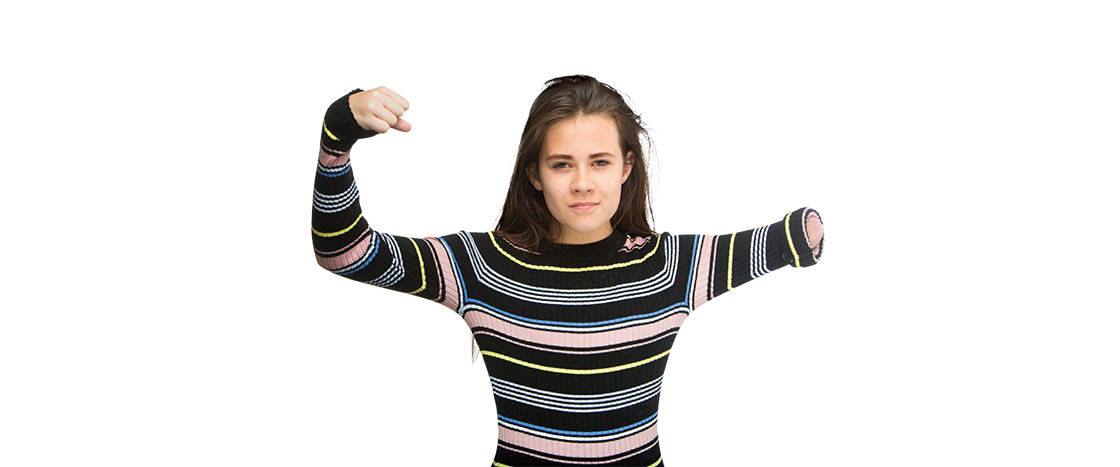Whitney Curtis/AP Images for Scholastic Inc.
Jordan invented this arm. It shoots glitter!
Jordan Reeves could feel the eyes on her as she walked into her new dance class. She didn’t know anyone. And a few of the other dancers would not stop staring at her left arm, which stops just above her elbow.
“They just kept looking and whispering to one another,” recalls Jordan. “It made me so angry and sad, especially because they weren’t even bothering to talk to me.”
But Jordan didn’t stay upset for long. Instead, she took action. The following week, Jordan showed up in a new T-shirt that she had made herself. Big, bold letters on the front of the shirt read “Don’t Stare. Just Ask.”
No one asked Jordan anything, which bothered her a little, but the staring stopped. “I don’t know if [the shirt] made a difference,” says Jordan. “But I felt stronger.”
Five years later, Jordan, who is now 13, is on a mission: to help other kids feel the same strength she felt in her homemade T-shirt.


